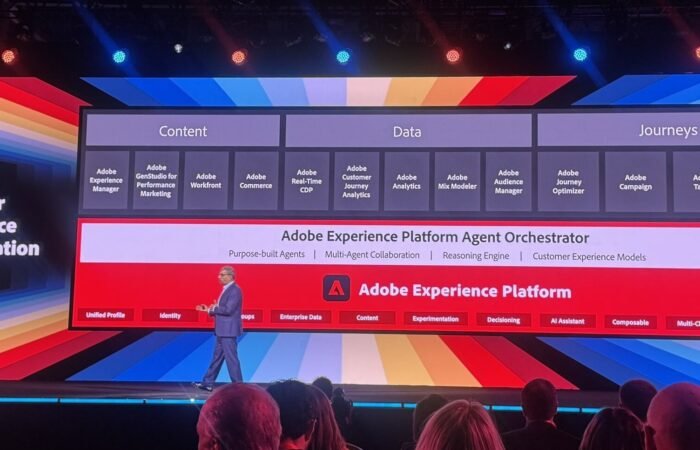Revamping or redesigning a UX interface can sometimes be even more challenging than starting from scratch, particularly if that interface is your website.
First impressions matter to your customers, and that first impression often comes when they visit your website. According to GoodFirms research, 73% of visitors leave an unresponsive website, and 62% leave if it has lousy navigation.
If your website isn’t up to par, then you might be considering a website redesign. Even though you might be tempted to dive right into a website redesign, there is a right and wrong way to go about it.
In this article, we’ll present a few reasons why you might want a website redesign and 6 steps to make your revamp as smooth as possible.
What is a website redesign? (And how often should you do it?)
A website redesign is changing the content, code, and structure of a site to improve the user experience. Given the focus on the user experience, most website redesigns focus on the visual aspects that customers see first, from the layout and color scheme to the navigation and content on the page.
However, a website redesign might also focus on other aspects that matter to the user experience, such as optimizing for speed or mobile experiences, as well as finding a way to increase conversions.
When should you redesign your website?
The simple answer is that it depends.
Many brands opt to perform a website redesign to keep up with the latest trends and changes in technology.
Whether or not and how often to redesign your website will depend on what goals you have for your brand and how well your website is capable of meeting that vision. Factors such as speed, performance, and even the budget you must devote to a website redesign can all come into play when planning a website redesign
Reasons for a Website Redesign
The first thing you want to do when considering a website redesign is to establish the reasons for undergoing a redesign in the first place. Some potential reasons include:
Modernize Aesthetics
A common reason for wanting to undergo a website redesign is to modernize the aesthetics. While some brands may be content with an outdated website, chances are your customers won’t respond as well as you would like. As customer demands change, so too do the things they find appealing, and your website needs to be able to cater to them with a modern and updated look.
While you don’t need to reinvent the wheel every time a new UI/UX trend appears, you should remain aware of what today’s customers want to see, as it could make the difference between lower bounce rates and increased conversions or losing out to a competitor.
Responding to Negative User Feedback
The most successful brands provide great customer experiences. A key part of that is responding to user feedback. If you receive complaints from your visitors that your website is difficult to navigate, they can’t find what they’re looking for, or some other large issue, it might be time to consider redesigning.
Remove Complexity
Do your users struggle to find what they’re looking for on your website? Can they easily complete the actions they want (or the conversions you want them to take)? If the answer to either of these questions is no, then your website might be too complex, and you may want to consider a redesign to resolve these issues. Additionally, you might want to improve the accessibility of your website so that people with disabilities can browse just as easily as others.
Mobile Optimization
Almost 59% of the global web traffic on the internet in Q2 2022 came from mobile devices. With so many potential visitors seeing your website on a mobile device, your website must be optimized for mobile traffic. If it isn’t, then this could warrant a reason for a redesign.
Rebranding
A website should always showcase your brand in the best light possible. This means clearly highlighting your brand messaging and showcasing your products and services. If your company has recently undergone a rebranding, changed the messaging it wants to be known for, or launched a new product or service, then revamping your website to reflect these changes should be a priority.
Technical Challenges
Outdated security or difficulty updating the content on your website could also be a reason to redesign your website. If your customers visit your website and don’t feel they can trust it due to missing HTTPS protocols or other security flaws, you could lose out on numerous customers.
Note: These issues may also be due to problems with your CMS so you should follow the redesign steps listed below to get to the root cause of the issue before simply redesigning your website using the same platform.
What are the Steps to Redesigning a Website
Once you have an idea of the general reasons to redesign your website, you need to start revamping.
1. Get input from internal stakeholders
The first step in redesigning your website is to get input from internal stakeholders. If your department is in charge of revamping the website, you probably have a general idea of why you need to update the website. However, it’s only by speaking to internal stakeholders you can hone in on the reasons for a website redesign and ensure that redesigning the website is the only thing that needs to be done to solve the problem.
2. Ask users for feedback
The next step is to get direct feedback from your existing customers. If your website is complex or has significant issues, they might have already lodged complaints. However, in many cases, your visitors won’t say there is something wrong unless you ask them. Reaching out for user feedback can help you narrow down what changes you need to prioritize when performing a redesign.
3. Gather benchmarking data
Find out what your starting point is. What are your current website loading speeds? Is your website performing as expected? Can users find what they’re looking for? Gather your current metrics, including heatmaps and traffic data, as once the redesign is complete, you will need to be sure that you’ve solved the problem or if you need to do something else.
Part of that benchmarking period will involve studying the competition.
Who are you competing against, and how well are you able to satisfy customer needs compared to them? Perform a competitive analysis to see how well your competitors are doing and what’s working for them. This is an opportunity to borrow ideas that might better resonate with your audience and use them to improve the user experience.
4. Perform a UX audit
Next, you want to perform a UX audit. While the benchmarking step helps you identify where you need to improve to meet your goals, the UX audit helps pinpoint the reasons why you haven’t reached those goals yet.
During this audit, you can identify the UX problems affecting your audience and what critical issues need to be addressed. It’s the last step in your website redesign plan and can help uncover potential roadblocks before you work on your new website.
5. Keep accessibility top of mind
Any website redesign should take into account the importance of accessibility. Web Content Accessibility Guidelines (WCAG) is the standard when it comes to digital accessibility and as part of your UX audit you should be performing an accessibility audit to determine current accessibility levels and what needs to be improved to be compliant.
The primary goal of WCAG compliance is to ensure that persons with disabilities are able to access your website and consume content. The four principles of WCAG include that your website and content must be perceivable, operable, understandable, and robust. For example, this could include providing text alternatives for non-text content like videos or images, and making web pages operate in predictable ways.
6. Begin the redesign process
Finally, it’s time to begin the redesign process. Take all of the data you’ve gathered from your benchmarking and UX audit to revamp your website. Once the redesign is complete, you can perform tests and see if you are now able to meet the goals you identified at the beginning.
Get Your Website Redesign in Order with Content Bloom
Your website is a crucial component of your digital brand. From driving awareness to improving customer engagement, it can be the difference between customers choosing your business or going to someone else.
Content Bloom understands the need for a sleek website, and we offer web & mobile design and UI/UX services to help you deliver the most user-friendly and engaging experience your customers could want. Undergoing a website redesign can be challenging, but with the proper support, you can accomplish your goals, whether optimizing for mobile devices, improving aesthetics, or rebranding to reflect your new messaging.
The multinational computer networking company NETGEAR needed to upgrade its CMS and redesign its website. They turned to Content Bloom to help them increase conversions and optimize the entire user journey. With our help, they were able to 2X conversions and even increase the number of ecommerce transactions they processed.
Read more about how NETGEAR dealt with its redesign in our case study.
Looking to elevate your website with innovative solutions?
FAQ
How much does it cost to remake a website?
The cost to redesign a website can vary depending on how much work needs to be done, who is performing the redesign and the size of your company but could range from a few thousand to tens of thousands of dollars.
What is the purpose of redesigning?
The purpose of redesigning a website will depend on your organization. Still, it could be due to rebranding, a need to modernize aesthetics, or improving mobile device optimization, among other reasons.
What are the 7 C’s of website design?
The 7C’s of website design are context, commerce, connection, communication, content, community, and customization.





